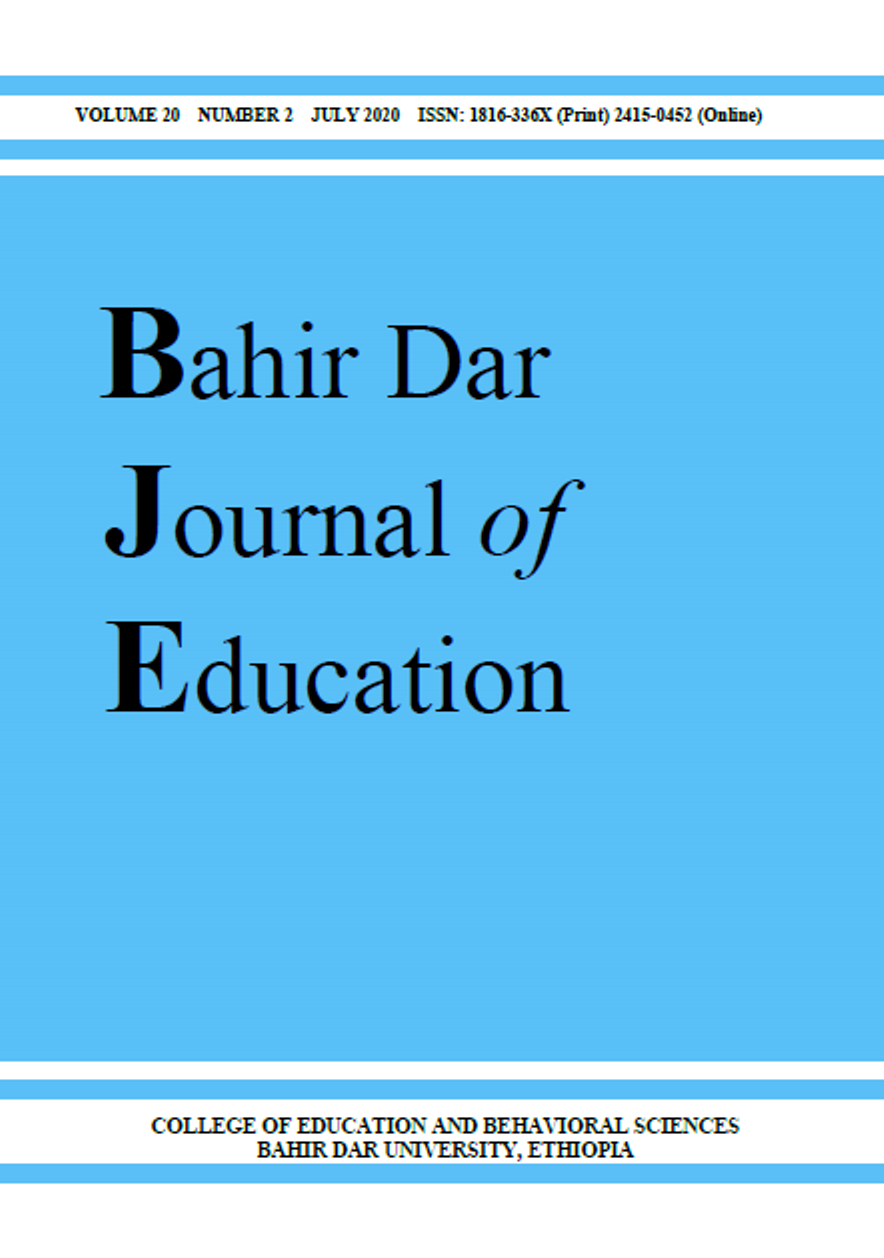Exploring and Fostering Second Graders’ Mathematical Patterning
Keywords:
teaching experiment, patterning, extending patterns, unit of repeat, predicting
Abstract
A teaching experiment was conducted with grade two pupils at the beginning of the 2018/19 academic year to explore and foster their mathematical patterning abilities: creating, and extending patterns, identifying units of repeat and its length, and predict terms of given patterns. The teaching experiment was conducted at a particular government primary school found in Bahir Dar City Administration. Twenty-five pupils (from seven to thirteen years old) who got parental permission to come school in the opposite school shifts were taken as participants of the study. These pupils sat in groups of five and each group was provided with matchsticks, beads with different sizes, bottle tops, and counters with different shapes and colors. The teaching experiment was conducted in two periods each lasting two and half an hour. Data have been gathered using task-based group interviews, field notes, observations, and pupils’ sample works captured through mobile camera. Provided with parallel models (an analogy) for repeating patterns, they created many and even complex repeating patterns. They can easily extend given patterns, and determine the unit of repeat and its length but predicting terms was difficult for them except for patterns with length of core unit two.
Published
2021-10-05
How to Cite
Gared, A. T. (2021). Exploring and Fostering Second Graders’ Mathematical Patterning. Bahir Dar Journal of Education, 20(2). Retrieved from http://journals.bdu.edu.et/index.php/bje/article/view/394
Issue
Section
Articles
Authors who publish with this journal agree to the following terms:
- Authors retain copyright and grant the journal right of first publication with the work simultaneously licensed under a Creative Commons Attribution License that allows others to share the work with an acknowledgement of the work's authorship and initial publication in this journal.
- Authors are able to enter into separate, additional contractual arrangements for the non-exclusive distribution of the journal's published version of the work (e.g., post it to an institutional repository or publish it in a book), with an acknowledgement of its initial publication in this journal.
- Authors are permitted and encouraged to post their work online (e.g., in institutional repositories or on their website) prior to and during the submission process, as it can lead to productive exchanges, as well as earlier and greater citation of published work (See The Effect of Open Access).

